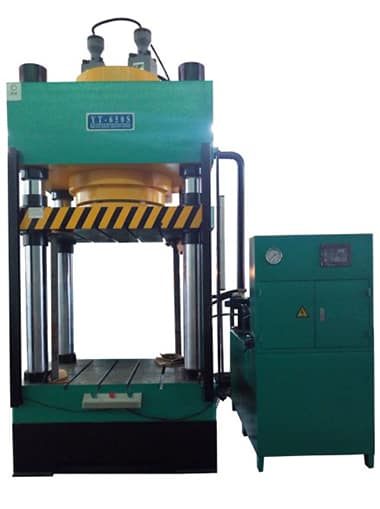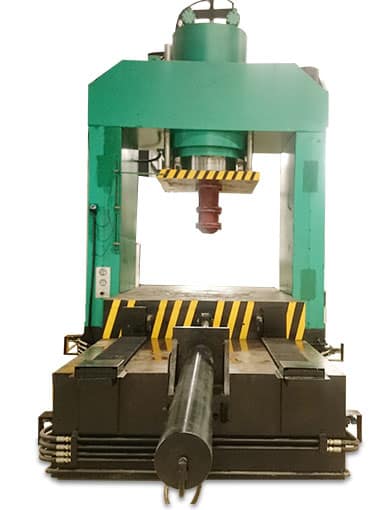Types of Rubber Molding Machines
time:2023-03-14 views:(点击 884 次)The rubber molding industry is a large and rapidly expanding sector of the manufacturing industry. There are various machines available for producing rubber items.
Hydraulic presses are an efficient machine for producing rubber products. These presses can be utilized in the production of car hoods and seals, among other items.
Compression Molding
Compression molding is a manufacturing process that fabricates large and intricate components from composite materials. This technique produces strong, visually appealing, and functionally superior parts.
The manufacturing process starts with the creation of a pre-form, made from precisely measured and preheated plastic or composite material. This pre-form is then placed inside an heated mold cavity and securely fastened shut.
Once the mold is sealed shut, a hydraulic press applies pressure on one half of it to force the pre-form into its entirety - giving the desired shape and chemical composition.
Compression molding is often employed to manufacture products such as wellington boots, seals, gaskets and machinery parts. It offers several advantages over other processes like lower tooling costs and high volume production; however it has some drawbacks such as not suiting all shapes or complexities and producing parts with flash or burrs that must be manually removed.
Transfer Molding
Transfer Molding is a specialized rubber molding technique that utilizes pressure to force uncured rubber through small holes into the mold cavity. A plunger forces stock material into an open transfer pot (located at the top of a closed mold) through its sprue (a small channel leading to its bottom).
Once inside the mold cavity, workers close it and then open it again. Once the part has cured, they remove both transfer pad and sprue material.
Transfer molding is a popular technique for producing various rubber products. It's particularly suitable for parts requiring high levels of precision and accuracy, as well as over-molded products. Furthermore, transfer molding offers reduced cycle times, flash-less tooling, and reduced material waste.
Flexure Molding
Flexure molding, also referred to as rubber injection molding, is a standard manufacturing process for creating rubber parts. It involves the application of heat and pressure to raw rubber which then gets molded into desired shapes and sizes.
A movable half of the mold called the plug descends into a fixed cavity and is subjected to intense pressure and heat in order to shape uncured raw material into desired shapes and sizes. Once fully cured, this final product emerges from within the mold cavity as desired.
This process utilizes a hydraulic press. A hopper feeds uncured raw rubber into the machine, where it is heated and then injected through a heated screw into a mold.
The process can be used for a number of rubber applications. One popular use is producing rubber seals. These are created by joining channel (edge trim) with cord or profile, providing strong yet flexible protection that withstands various conditions and can be tailored to fit any type of application.
Hot Melt Molding
Rubber molding is a manufacturing process in which raw materials are transformed into molded products. These can come as pre-measured pellets or granules and then injected into heated cavities to form molds.
Compression molding is one of the most widely used processes in rubber molding. This method is ideal for creating large, intricate rubber products that would be difficult or expensive to manufacture using other methods.
In this type of molding, pre-measured rubber pellets are placed into a heated mold cavity and compressed until they stretch to fit the shape. After cooling, they harden.
Hot melts are a widely used adhesive in low pressure molding applications due to their rapid bonding time and quick dry time after application. Not only that, but these hot melts also possess excellent temperature, chemical, and UV resistance properties; making them easy to process for manufacturers who require strong yet long-lasting glue solutions.
Link to this article: https://www.ihydraulicpress.com/mk/1620.html
Hot Articles
-
How to Make a Hydraulic Press Brake
Press brakes are essential pieces of equipment in any metal fabrication shop, capable of bending sheet metal into various shapes and angles. To ma……
-
Can You Use a Hydraulic Press to Harden Water?
A hydraulic press is a machine that utilizes hydraulic fluid to generate and transfer force. Pascal’s law dictates that exerting force upon ……
-
What Is the Hydraulic Press Used For?
A hydraulic press is a mechanical device that utilizes the pressure of fluids to shape and deform metal. It operates under Pascal’s principle,……
-
Hydraulic Presses – What Hydraulic Press is Used For
Hydraulic presses are used for a variety of applications. They come in all shapes and sizes, so you can find the right one for your needs. They can ……
-
Hydraulic Press for Asphalt Repair
Asphalt repair requires the use of hydraulic presses, which are cost-effective methods to produce high quality repairs that require less upkeep. A h……
-
How is Hydraulic Press Capacity Calculated?
Hydraulic presses can apply large amounts of force to mold metal parts. The amount required depends on both the material being formed and its ener……
-
Hydraulic Press for Wind Turbine Repair
When a wind turbine is damaged, there are various methods for repair. One popular tool used for this task is the hydraulic press. Hydraulic presses ……
-
Hydraulic Press For Engine Repair
Hydraulic presses can be an invaluable asset for car repair shops and garages. They help straighten a steering linkage, brake shaft or control arm b……
Latest News
-
Hydraulic Press For Laminating
Hydraulic presses are machines that exert force by using liquids, usually water. As such, hydraulic presses have greater efficiency than their mecha……
-
How Does Hydraulic Press Make Things Heat Up?
Hydraulic Press Channel on YouTube is known for using their industrial hydraulic press to crush a wide array of items, but in their latest video t……
-
What Is Hydraulic Press Made Of?
A hydraulic press is a machine that utilizes hydraulic pressure to shape and deform materials. It consists of three components: the cylinder, piston……
-
Hydraulic Press Machine – Find a Hydraulic Press Machine Near Me
Hydraulic presses are highly sought-after for their adaptability and capacity to meet a variety of forming needs, making them an indispensable piece……
-
How to Work Hydraulic Press Machines
Hydraulic presses utilize Pascal’s law to generate force by compressing a fluid under pressure and transmitting this mechanical power direct……
-
Why Hydraulic Presses Exert So Much Power
Hydraulic presses use hydraulic fluid to transmit force from a small piston into a larger cylinder, using Pascal’s law, which states that an……
-
Hydraulic Press Vs Mechanical Press
Hydraulic presses offer several advantages over mechanical presses, such as greater versatility, lower costs and improved efficiency. A hydraulic pr……
-
How Dangerous Is a 50 Ton Hydraulic Press?
Hydraulic presses are highly versatile machines that can perform a range of functions – from crushing large objects to shaping metals –……














































